Truth Overdrawn. Christoph Schlingensief and his films
Underappreciated for many years and treated as a mere provocateur, Christoph Schlingensief was, above all, a radical educator. A review of films by this German director and artist, who died in 2010, highlights how even his older films remain outstandingly current.
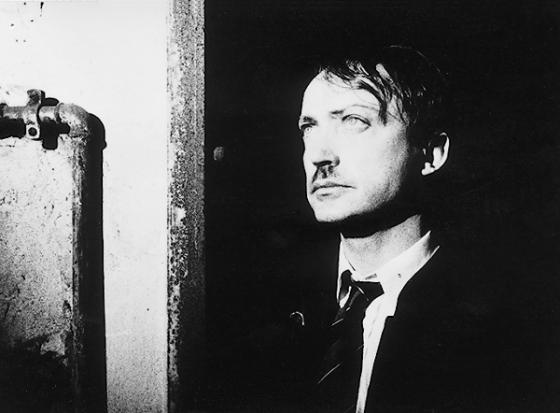
100 lat Adolfa Hitlera
Artist as production agent
Morning of 31 August 1997: Hybrid WorkSpace at Documenta X in Kassel. The second part of Christoph Schlingensief's Mein Filz, mein Fett, mein Hase - 48 Stunden überleben für Deutschland is set to begin, when the director learns via internet of the death of Princess Diana and her partner in an automobile accident. He immediately transplants the news into the repertoire by singing, "Lady Di ist tot, Dodi, Dodi, Dodi...," while his troupe - dressed in part, like Schlingensief himself, in leopard prints, dance on sandbags around the building, to the theme from Staying Alive. The public, which has not yet heard of the tragic events in Paris, treats the whole thing as a macabre joke. Later the same day during a theater performance, Schlingensief is arrested by the police (and almost immediately released) for putting up posters with the invocation "Kill Helmut Kohl," Germany's then-chancellor. The German press agency DPA reported: "Scandal at Documenta: Princess Diana and Chancellor Kohl Insulted." Mein Filz, mein Fett, mein Hase - 48 Stunden überleben für Deutschland is probably the first art project to use the accident in the Parisian Alma Tunnel; Schlingensief artistically transformed it and ad hoc showed on the stage in an act of eccentric and grotesque creativity. For an artist who once described himself as a "production agent", this is a classic example of his modus operandi.
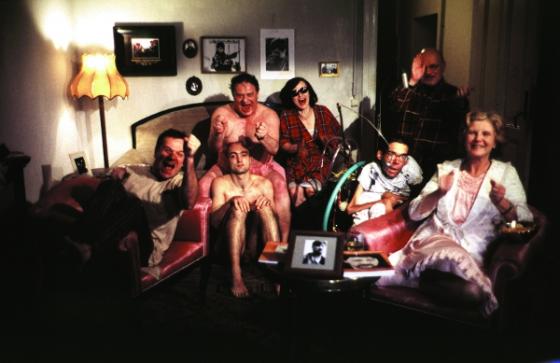
120 dni Bottropu
Multi-talent
As a result of such projects, near the end of the 1990s, Schlingensief's name became familiar to increasingly broad audiences. But this multi-talent, born in 1960 in the west German town of Oberhausen, had already gained notoriety as early as the 1980s as the director of eight feature length films (and several shorts) and, later, theater productions beginning in 1993 with Berlin's Volksbühne, a stage with traditions though open to experiments. Schlingensief, who began as a filmmaker, became a broadly acclaimed artist after his 2002 cycle Freakstars 3000 (which was screened in 2003 as a feature length film), a fact well exemplified by his renowned 2007 production of Richard Wagner's opera Parsifal during the Bayreuth Wagner Festival or his German pavilion at the 2011 Venice Art Biennial. The status of a "consensus artist" is especially surprising given the radical nature of his somewhat forgotten film work.
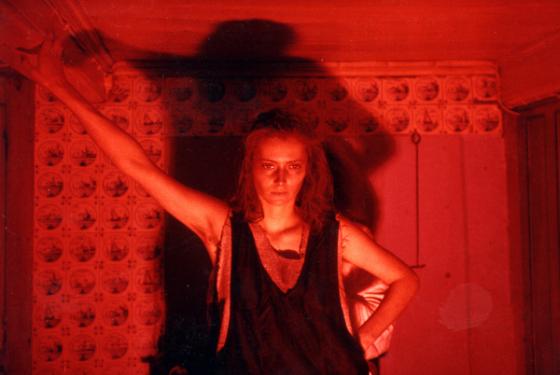
Egomania
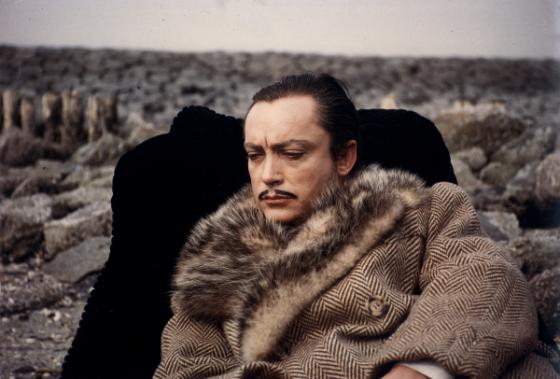
Egomania
Radical art
Since the beginning of his art career through the early years of the new millennium, art critics treated Schlingensief as the enfant terrible of the German art scene. Over time however, his projects gained increased notoriety, including his founding of the Chance 2000 party, which in 1998 took part in the Bundestag elections (winning nationally 3206 first place votes and 28566 second-place votes), the film Rosebud (2002), which mercilessly exposes the Berlin Republic1, or the Bitte liebt Österreich - Erste Österreichische Koalitionswoche (2000) project, a provocation against the Schüssel and Haider tandem government where Schlingensief set up containers for asylum seekers next to Vienna's Staatsoper opera, treating them like political commentary from the art world rather than cultural "deconstruction." It is clear Schlingensief accepted transgression, especially when one notes how innovatively he crossbred art and life, an obvious expansion of Beuys's concept of the "social sculpture." Film critic Georg Seeßlen finds Schlingensief's films to be "art in the form of film," "radical art," as evidenced by the lack of a line between politics, religion, intimacy and representation - all of which provide a look into "what the film is made of."
Over time, the dislike or even contempt that resounds in the phrase "Schlingensiefication of art" came to be replaced with a perspective in which Schlingensief on the German art market appears not (only) as a provocateur, but increasingly often a figure recognized for his unconventional talent and an artist who injects intellectual ferment, and is viewed and listened to as a public persona. And it suddenly became apparent how much his voice was missed when Schlingensief died on 21 August 2010 in Berlin of lung cancer. He bleakly recounted his illness in the book So schön wie hier kanns im Himmel gar nicht sein! (subtitled Cancer Diary). Schlingensief primarily thought of his lingering death as an image drawn from his work: "When I imagined my death as an image, I almost always see myself on stage, as I stage my death. There is a figure sitting in a chair, the stars appear at arm's length, crickets chirp, it is hot, and the figure is dying."

Niemiecka masakra piłą mechaniczną
Fear as creative force
The artist was ultimately unable to design the pavilion at 2011 Venice Biennale, but it consisted of his work, and the Golden Lion it received (for best national pavilion), came posthumously. The pavilion in Venice included documentary materials about projects continued by Schlingensief's associates to construct an opera village in Burkina Faso and many of the artist's films, including Menu Total (1985/86), Egomania (1986), 100 Jahre Adolf Hitler (Die letzte Stunde im Führerbunker) (1988), Das Deutsche Kettensägenmassaker (1990), Terror 2000 - Intensivstation Deutschland (1992) and United Trash (1995&96). Schlingensief's films have been carefully restored and are now distributed by Filmgalerie 451. As the film titles suggest, Schlingensief usually operated at the intersection of film genres such as splatter, horror or trash. American German studies Professor Kristin T. Vander Lugt describes Terror 2000 as "slapstick-meets-beat-meets-expressionism qua sexploitation-meets-psychostimulated French New Wave."
The starting point for Schlingensief's films as a diagnosis of a sick Germany with the 'German Trilogy' as its centerpiece: 100 Jahre Adolf Hitler, Das Deutsche Kettensägenmassaker, and Terror 2000 offer a merciless and spiteful indictment of united Germany's past and present. Using drastic visual and narrative means, Schlingensief shows the root cause of Germany's infirmity where, just like in his later United Trash -a bloody persiflage of UN aid for Africa, the open exaggeration of violence constitutes an artistic means that serves as a therapeutic "self provocation." Shot in a bunker in a mere 16 hours, the film 100 Jahre Adolf Hitler lightly and grotesquely shows the final moments of Nazi delirium subsumed in an infernal cabaret; Das Deutsche Kettensägenmassaker, modeled on the Texas Chain Saw Massacre horror classic, presents German reunification as a bloodbath. East Germans are beastly murdered by their brothers from the West and made into sausage. Schlingensief claimed that truth could be found in exaggeration and transgression, which he saw in the work of filmmakers such as Werner Schroeter, Rainer Werner Fassbinder or Luis Buñuel. The film's motif, he claimed, "they came as friends and ended up a sausage" is, after all "not untrue." His next film, Terror 2000, seems even more caustic, an unbridled blood-dripping crime story about the murder of a Polish immigrant family in Germany by German neo-Nazis. Schlingensief's claims to have used "fear as a creative force" in the film, which, like many of his works, became the subject of a stormy public debate, attacked by numerous sides. However, when viewed from the perspective of the rebirth or racist violence and crime shortly after the film was made, it might be called a precise and radical critical commentary of Germany's political situation shortly after reunification, and assumes unexpected currency after the recently discovered series of murders and acts of terror against immigrants committed by neo-Nazis throughout the land.
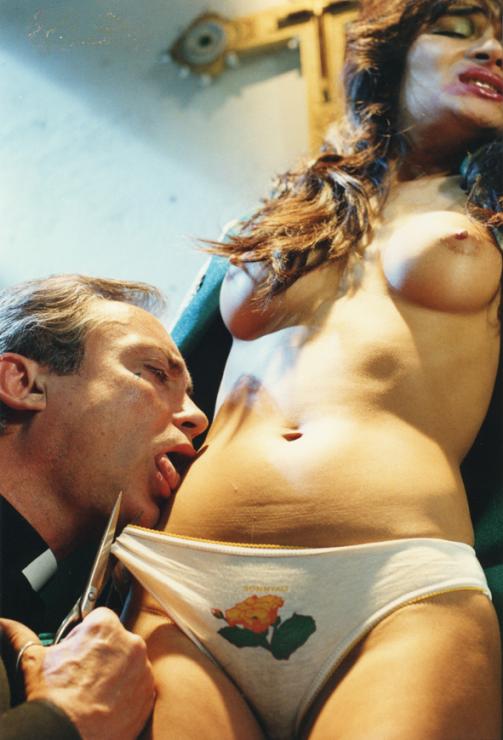
Terror 2000
Social fear
Despite his trash and splatter esthetics while choosing controversial themes, Schlingensief makes the artistic grade also in part due to his careful choices of actors. In his German trilogy, the partially comic roles display the talents of actors known from new German cinema of the 1960s and 70s, such as Udo Kier, known from the films of Rainer Werner Fassbinder, Margit Carstensen and Volker Spengler, while in Egomania, an experimental existential film shot on a small ice covered island in the North Sea, Schlingensief cast Tilda Swinton, with whom he was in a relationship at the time. His Freakstars 3000 shows, caricatures of Idol type television schlock, feature a mix of professional actors and amateurs with disabilities, giving the public an opportunity to, as the film claims, "deal with issues of non-disability."
"Spreading fear and terror is one of the main tasks of art," claimed Schlingensief about his art, while another of his quotes only seems contrary, "ultimately, it doesn't matter them when I would like to be certain that there was a social streak in my work. But my projects investigate issues: why some systems need coercion while others don't, how those particular kinds of coercion function, and, above all, why certain people are missing in those systems." Unappreciated and treated as a mere provocateur, Christoph Schlingensief was, above all, a radical modern proponent of the Enlightenment.
Martin Conrads works as an independent author in Berlin and is a lecturer of visual communication at the Berlin University of Art.
Copyright: Goethe-Institut
Links
http://www.schlingensief.com/
Christoph Schlingensief's Homepage
http://www.festspielhaus-afrika.com/
Schlingensief's opera village project in Burkina Faso
http://www.krank-und-autonom.de/
"Krank und autonom" is a project to help cancer patients started by Schlingensief after he was diagnosed with the illness
http://schlingenblog.posterous.com/
Schlingensief's "Blog"
Films available on DVD from Filmgalerie 451:
http://www.filmgalerie451.de/filme/schlingensief-edition/
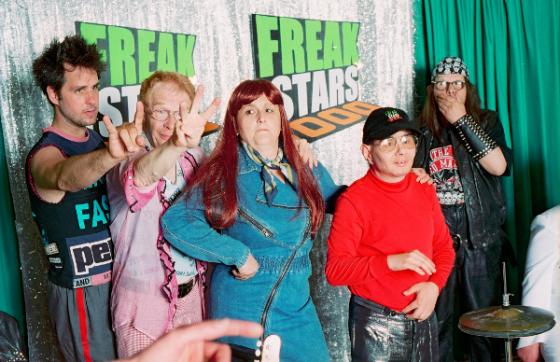
Freakstars 3000
- 1. Berlin Republic is the commonly used name for Germany after Berlin once again became the country's capital.

